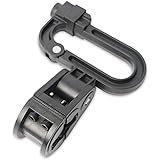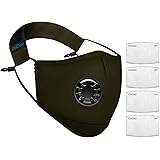3rd Part; The first chapter of the Srimad Bhagavad Gita is called Arjuna Visaada Yoga or The dialectical conflict of Arjuna: Lamenting the Consequence of War.
In continuation of
1.Introduction of Srimad Bhagavad Gita
2. Chapter 1 Arjuna Visaada Yoga; 1st part
3. Chapter 1 Arjuna Visaada Yoga; 2nd part
In order to subtly convey the superiority of the Paandavas, Sanjaya commences his description of the conch shell beginning with the word pancajanyam which is the name of Lord Krishna’s transcendental conch shell. Referring to Lord Krishna as Hrsikesa, the controller of the senses; a storehouse of ecstasy, enchantment, and supremacy accompanied with amenities of life; is to be seen as indicative of the Supreme Lord guiding their (Paandavas) cause; by implication victory was assured for the Paandavas He then mentions the names of the divine conch shell called Devadatta of Arjuna, who is referred to as Dhananjaya. At the time of Rajasuya sacrifice Arjuna conquered several kingdoms and brought huge wealth to the capital of Paandavas hence the soubriquet Dhananjaya to him. Bhima the second Paandava had incomparable bodily might, he inspired terror in the minds of those who heard him or saw him, he had ravenous appetite and was for this reason described Vrkodara, he is in the possession of the conch shell Paundram. The addition of the word karma to the name of Bhima denoting reaction to action refers to his slaying the demon Hidamba and thus serves as a forewarning to Duryodhana on the consequences. The purport is that the conch-shell Pancajanya of Lord Krishna and the conch shells Devadatta of Arjuna and Paundram a mighty conch shell of Bhima is that the sound from these conches were loud, terrible and reverberated to a long distance.
More on Hinduism : The relation between human life and the Vishnu avatars
King Yudhisthira the son of Kunti blew his conch Anantavijaya, while the sons of Madri; Nakula and Sahadeva blew their conches known by the names Sughosa and Manipuspaka. The appellation raja to Yudhisthira is an allusion to the triumphant performance of the Rajasuya ritual, his receiving tribute from all other kings and crowning him so; thus in consequence Sanjaya is highlighting the supremacy of the Paandavas together with the inadequacy of the Kauravas. At the time of the battle Yudhisthira had no kingdom, yet Sanjaya considered all the marks of the king were present in the person of Yudhisthira. Here Sanjaya is obliquely revealing to Dhritaraashtra that he should not entertain any ideas that his son Duryodhana will be victorious in the battle even with the assistance of Bhishma and Drona. He is implying that the destruction of his dynasty is imminent and was initiated by his own malevolent prompts and duplicity. Next the warriors of the Paandava army, the King of Kasi, Sikhandi, the invincible Satyaki, Virata, Drupada, the strong armed Abhimanyu son of Subhadra severally blew their individual conches. The deafening sound of the Paandava’s divine conch shells was overwhelming and heart crushing in the sense it made the universe and the terrain resonate, with its thunder thereby caused immense trepidation to the sons of Dhritaraashtra. The uproarious noise made by the blast of shells from the Kaurava army moments earlier was not likewise that intense nor did that create anxiety in the army of the Paandavas.
More about Hinduism ; Is Ravan symbol of evil just for kidnapping Sita.
Duryodhana while witnessing the strength of the Paandava army sustained by the might of Bhima pondered over the strength of his own army under the command of Bhishma. Discerning the mood of his preceptor Dronacarya, he could possibly recognize the deficiency in his own troops and the strength of the Paandavas, deep within him this distressed him profoundly. The army of Kauravas was anxious, on the contrary the Paandava army remained intrepid, this is revealed by mentioning the emblem displayed on Arjuna’s banner which was that of valiant Hanuman who weakens the audacity of the adversary. At that moment, at the very verge of battle when the clash of weapons was about to start, Arjuna held up his invincible bow named Gandiva and calmly looked upon the well arrayed army of the Kauravas before him and spoke to the Lord Krishna addressing Him as Hrsikesa the master of the senses. When the Supreme Lord Krishna Himself is carrying out the orders of the Paandavas, there is not the slightest doubt about the victory of the Paandavas who are His intimate devotees. With reference to Dhritaraashtra it is mordant indicating that his very ruler-ship of the earth will be terminated due to a lack of rectitude. Addressing Lord Krishna as Acutya; the infallible one, Arjuna appealed to Him to place the chariot between the two firmly opposing armies. His intention to so position the chariot is to see those opponents who are arrayed against him and desiring to fight and also to signify the compelling strength of Lord Krishna’s resolve on all sides. Again the reason for placing the chariot as instructed is the Kauravas are only desirous of war and externally appear unmoved by trepidation. Also given that the battle is taking place involving relatives, Arjuna desires to see just what friends have joined the ranks of the enemy that he will have to fight. Arjuna considered necessary to see the individuals of the rival army assembled there wanting to carry out what was pleasing to Duryodhana. Arjuna is saying to Lord Krishna permit me to pore over those acquaintances of mine who have chosen to join the ranks of the Kauravas instead of opposing evil minded Duryodhana. There was a spirit of challenge in the mind of Arjuna he wanted to see for himself the heroes who had gathered on the field of battle to advance the unrighteous interests of Duryodhana
If you like the article please do share .




